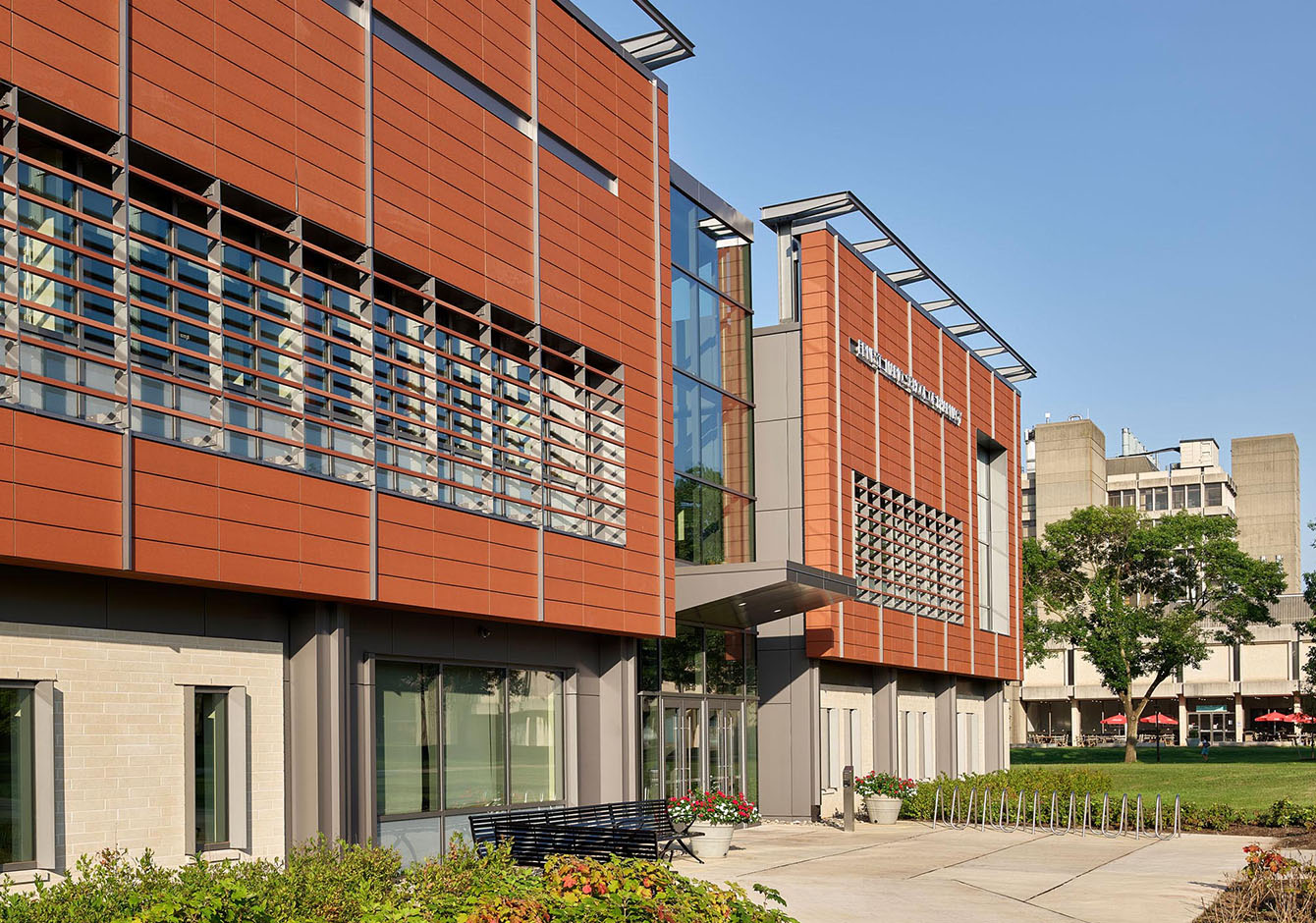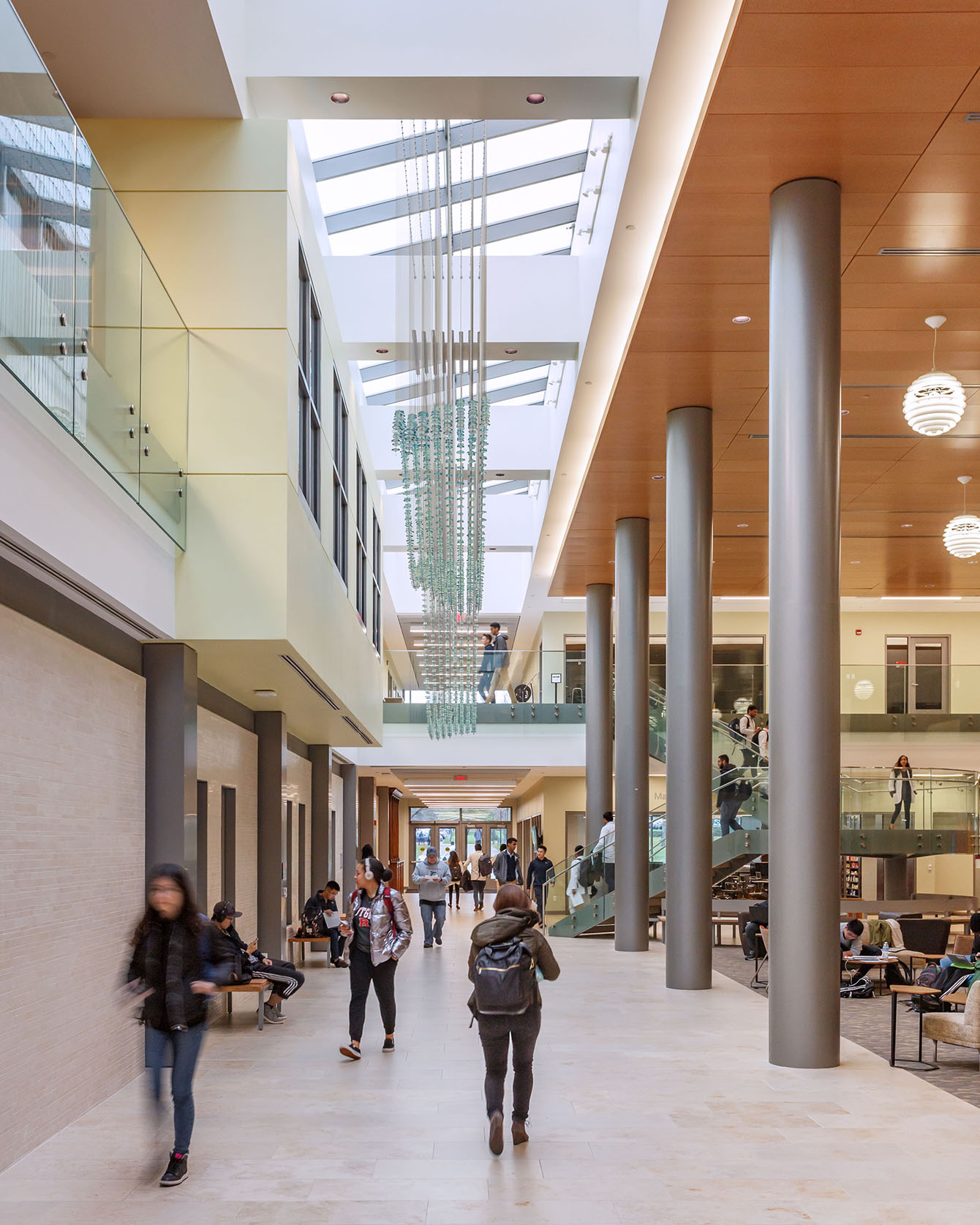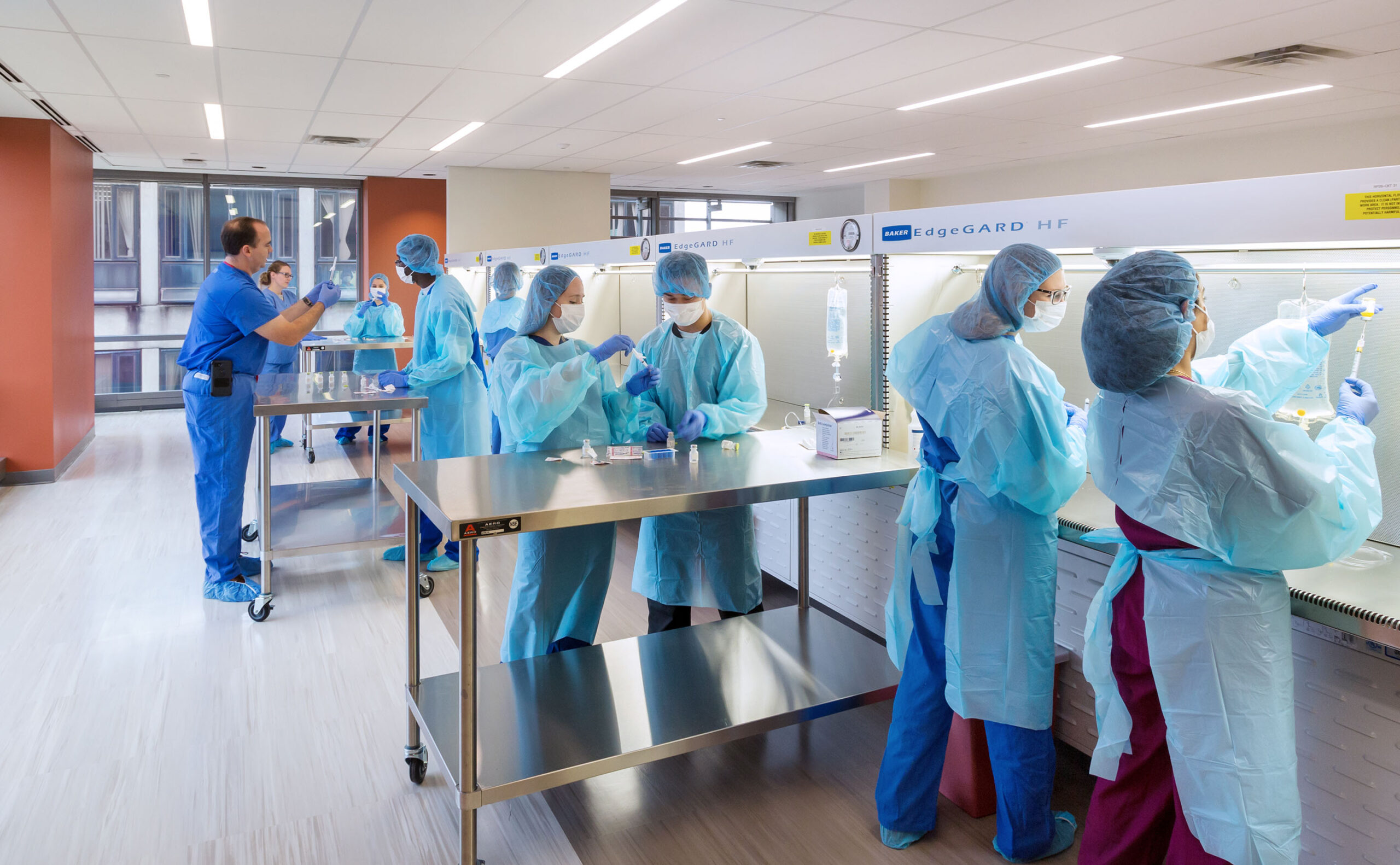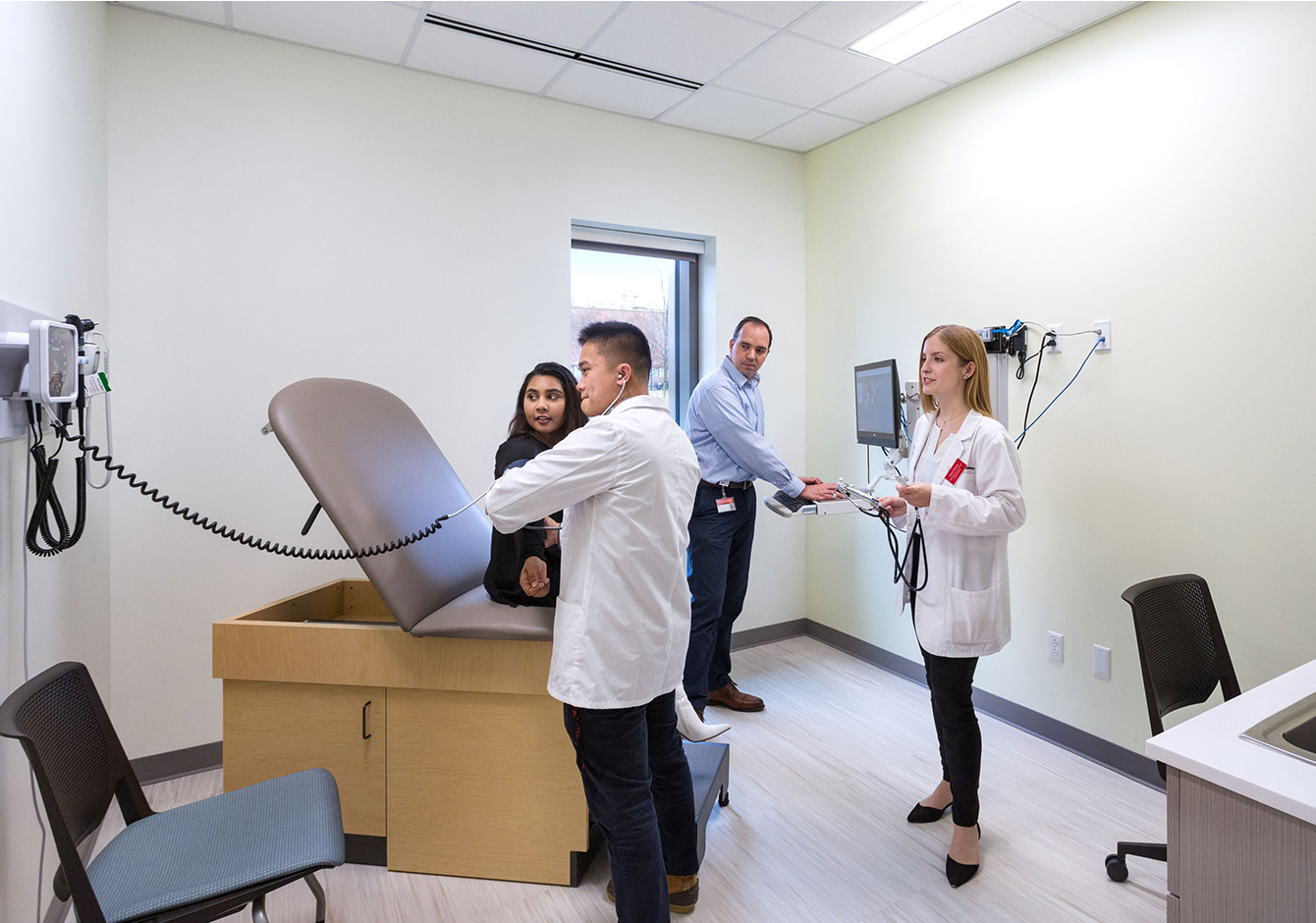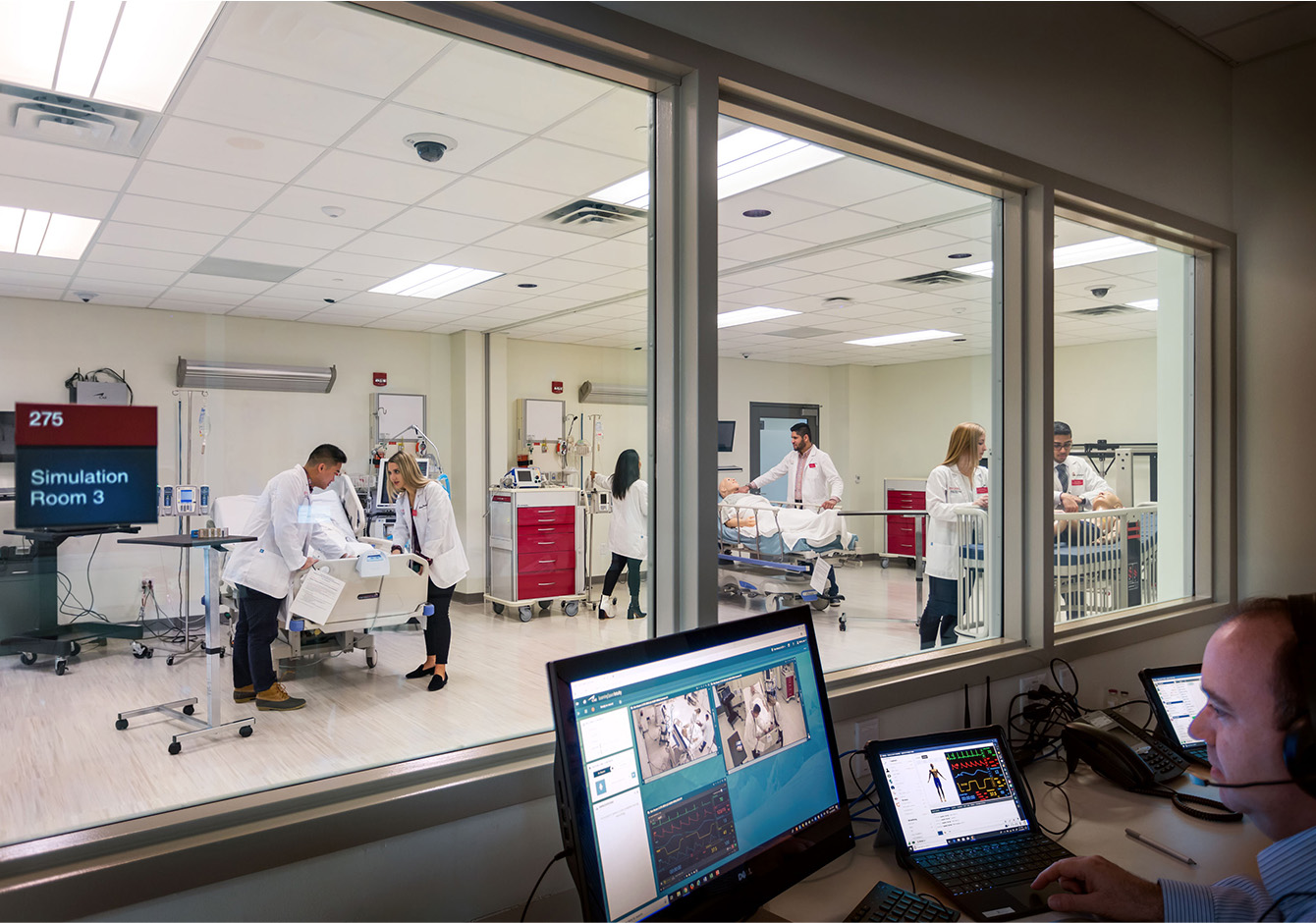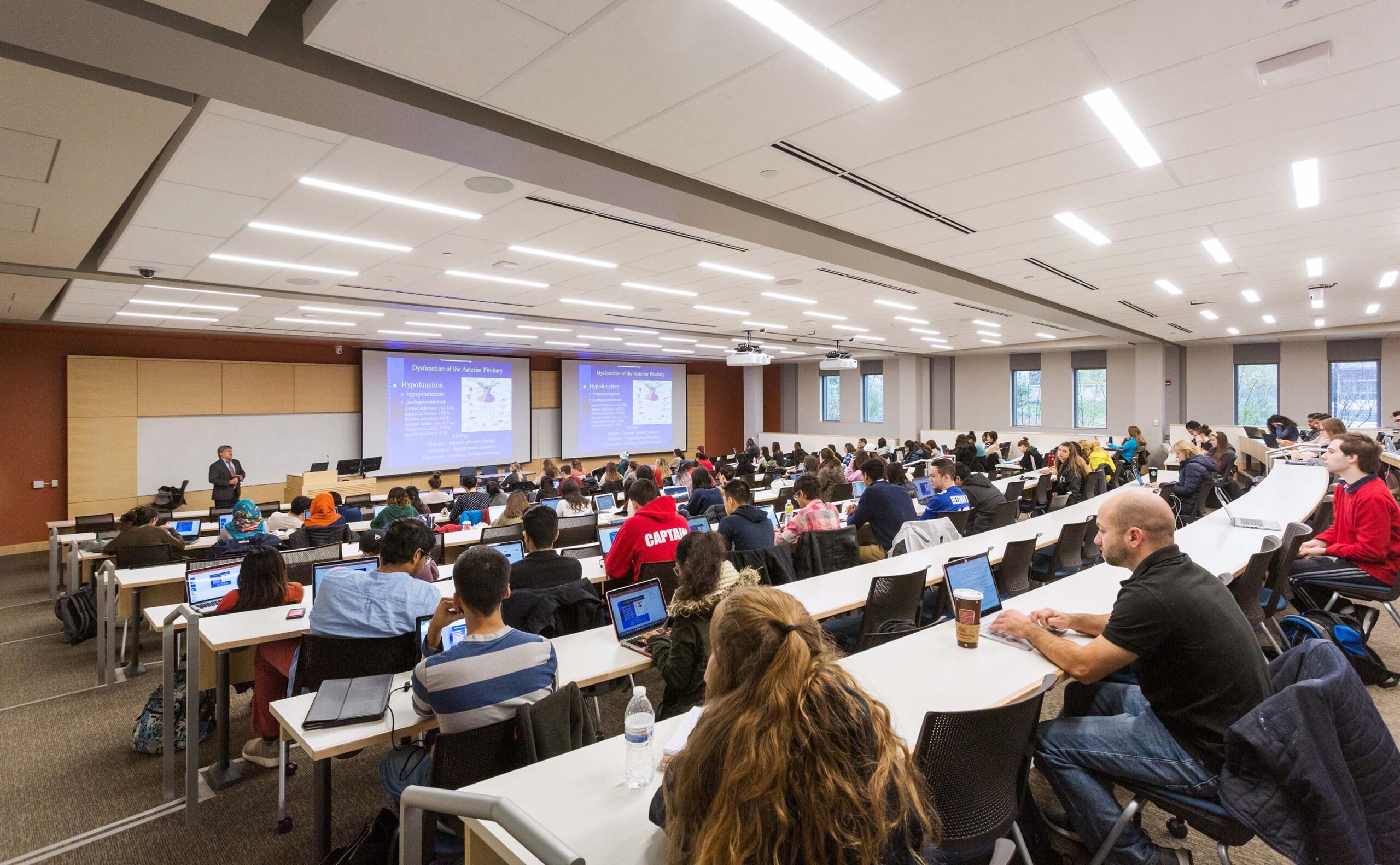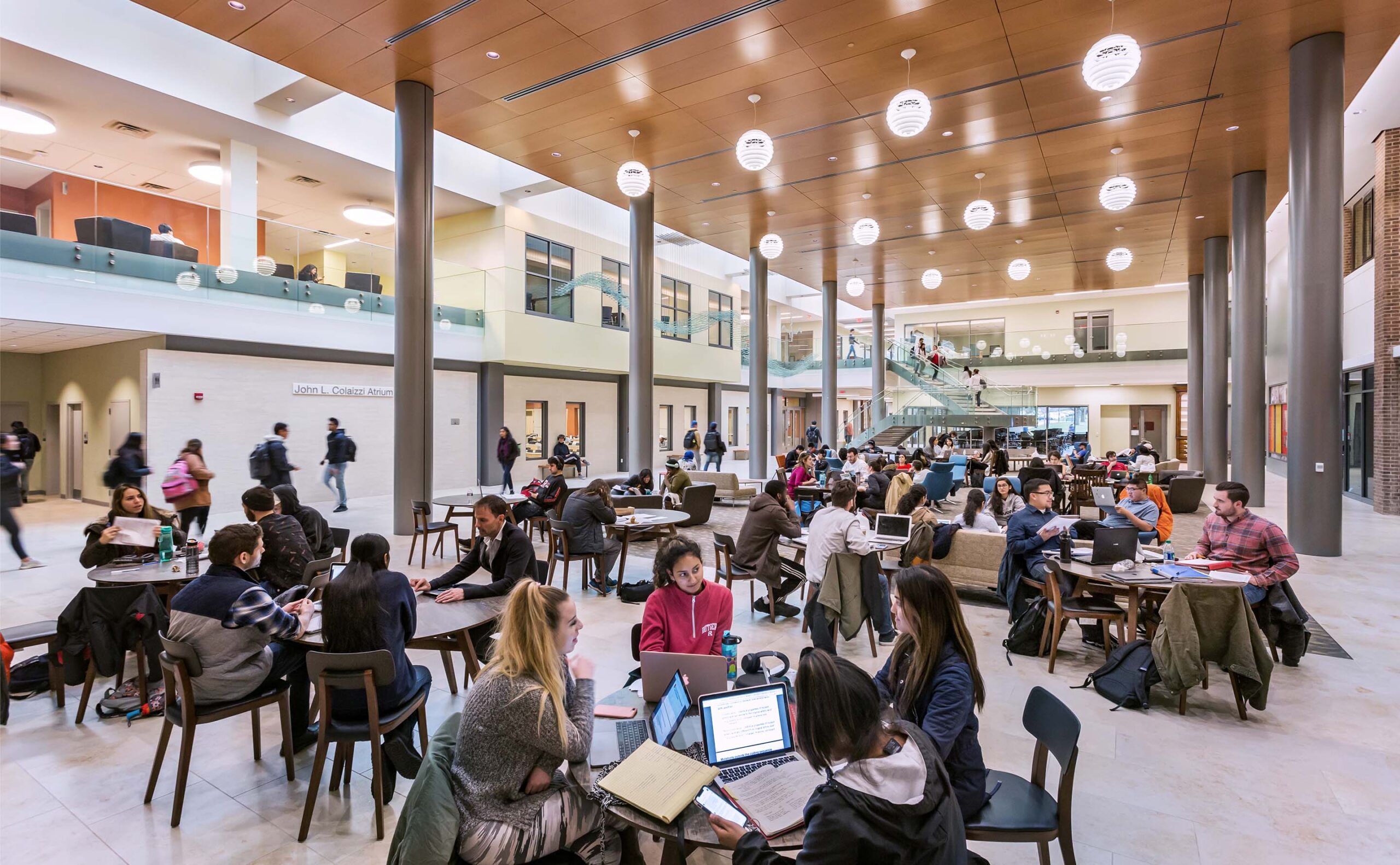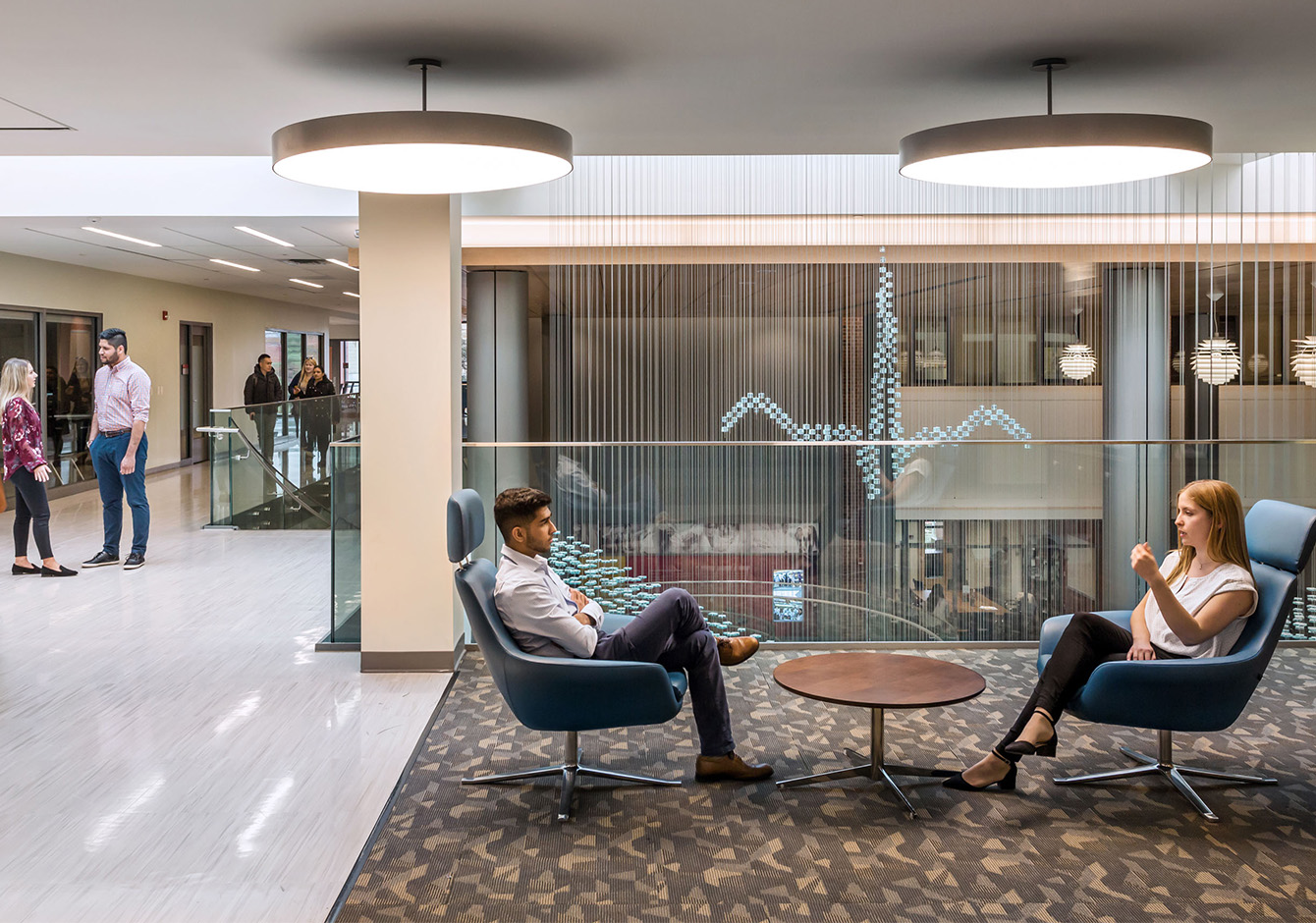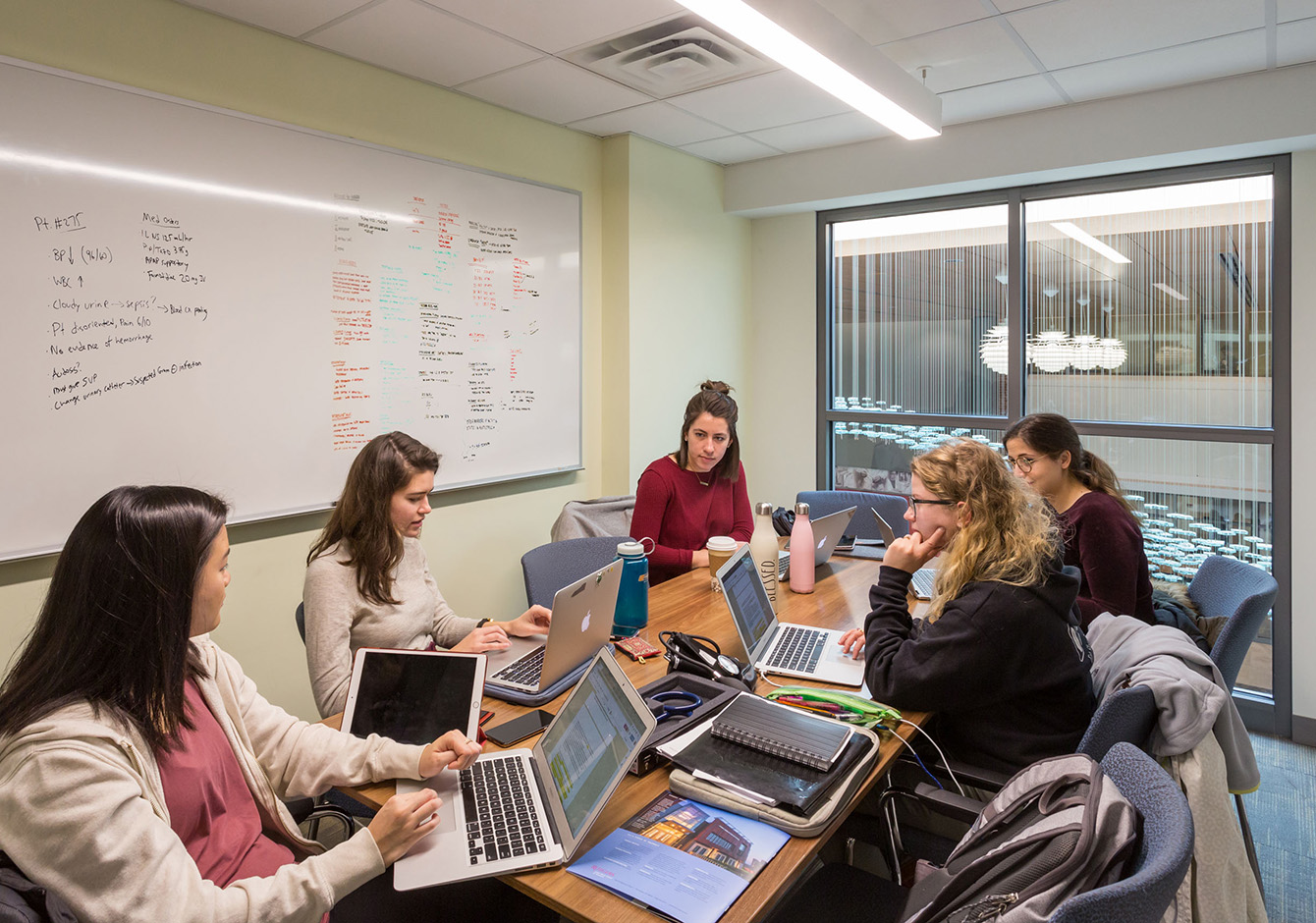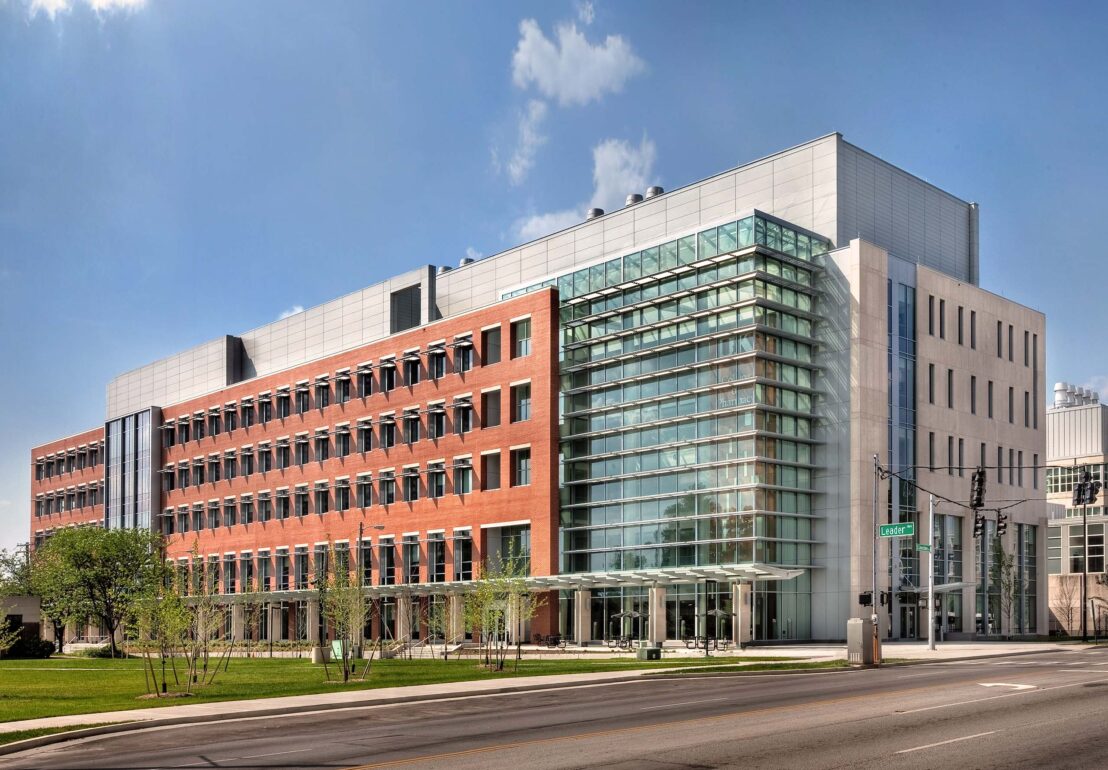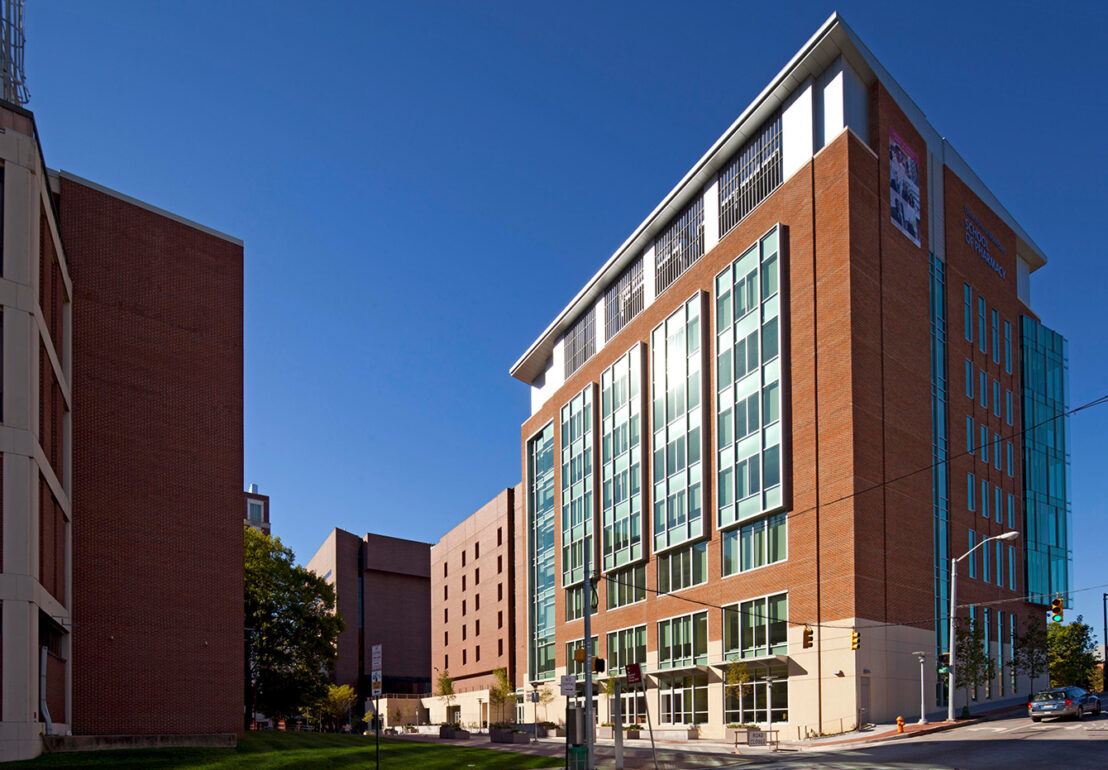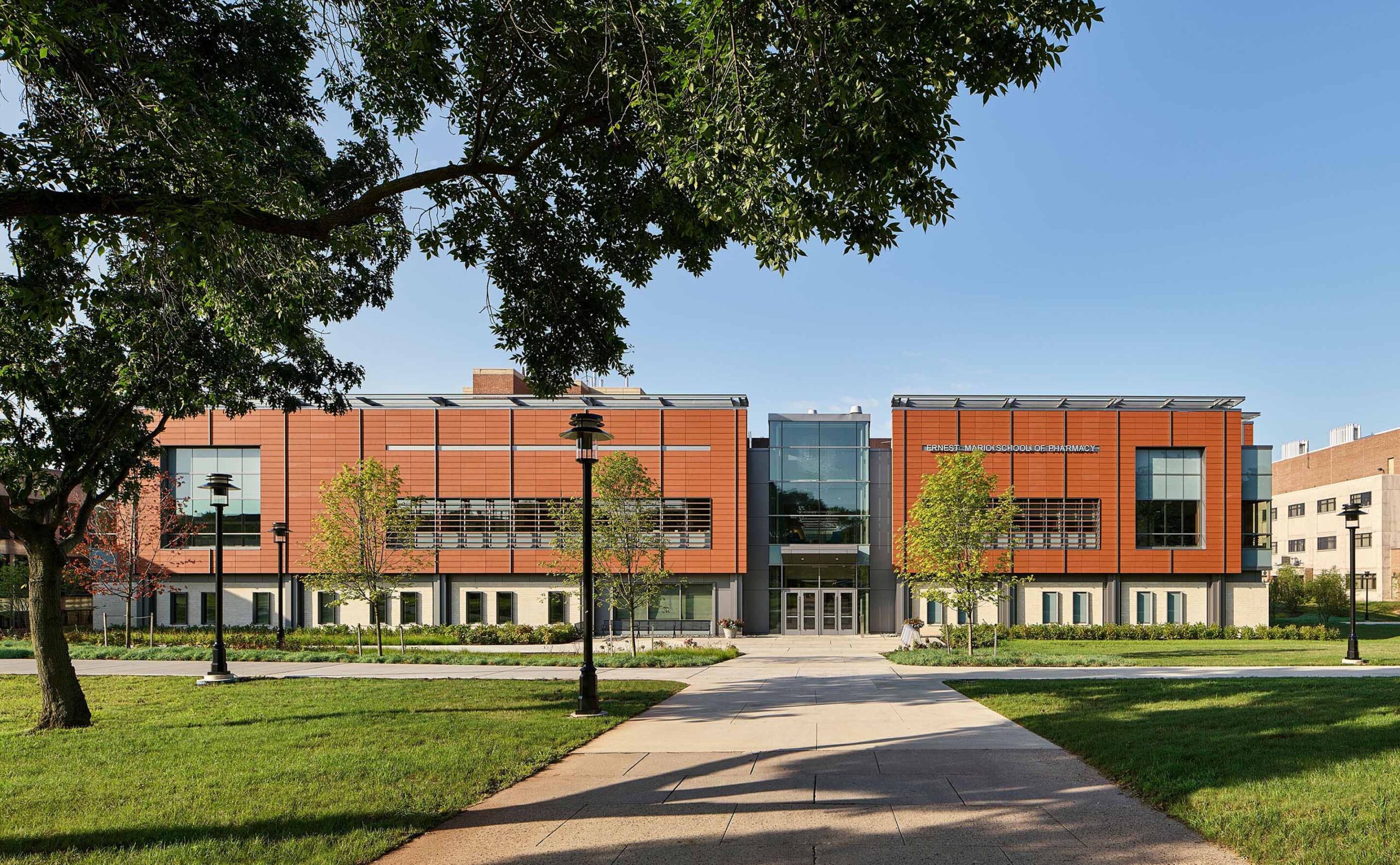
Rutgers University
Ernest Mario School of Pharmacy Building Addition
Piscataway, New Jersey
Size
60,000 gsf
Services
Programming
Laboratory Planning
Architecture
Roles
Ellenzweig
Design Architect and Laboratory Planner
Clarke Caton Hintz
Architect of Record
Certifications
Designed to meet LEED Silver
The two-story addition to the Ernest Mario School of Pharmacy building provides a new identity and front door for the School, transforming its presence on the Busch campus.
The project supports the goals of the School of Pharmacy to be a leader in pharmacy education. The addition provides facilities that support the latest technologies and practices of the pharmacy industry and a welcoming, collaborative environment for its students. The first floor allows for views into the new community practice suite, lecture halls, and light-filled Commons that links the existing building to the addition and serves as a social hub. The second floor, which opens to the Commons, features a clinical skills/exam room suite and simulation suite, classrooms, a mock admixture room for training students in preparing sterile intravenous medications, break-out and collaboration spaces, and the administrative suite.
